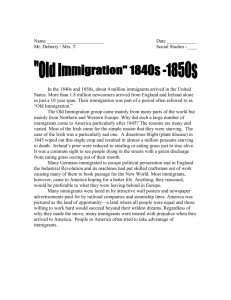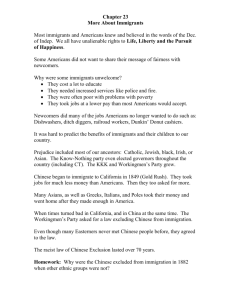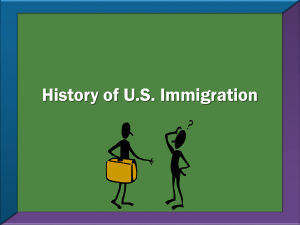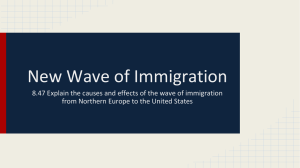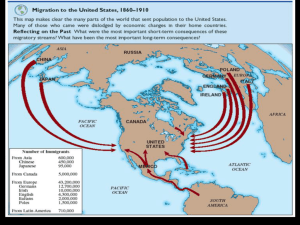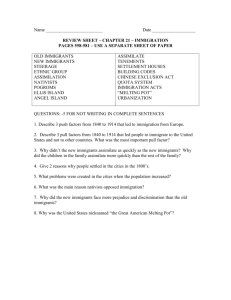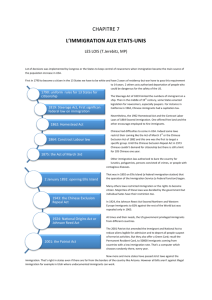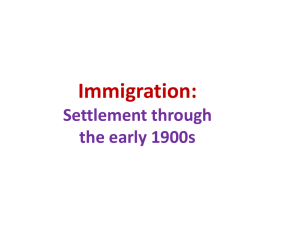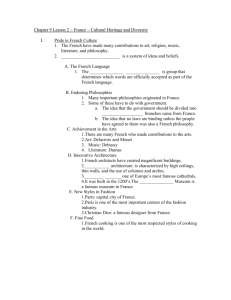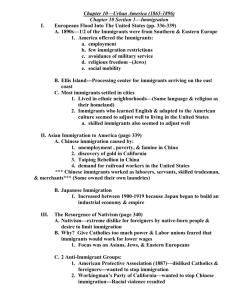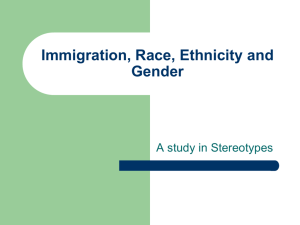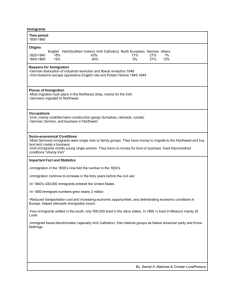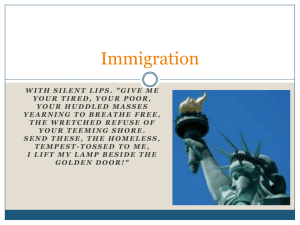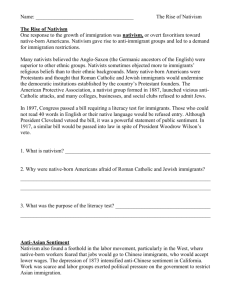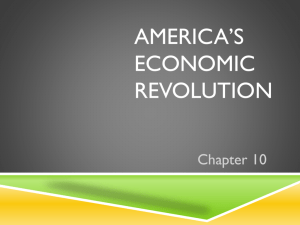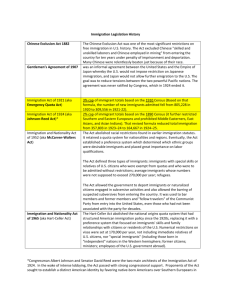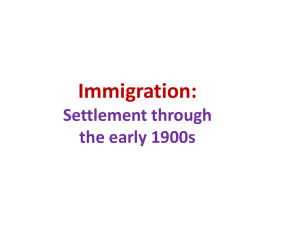Immigration has been divided into two historic periods: I. Old
advertisement
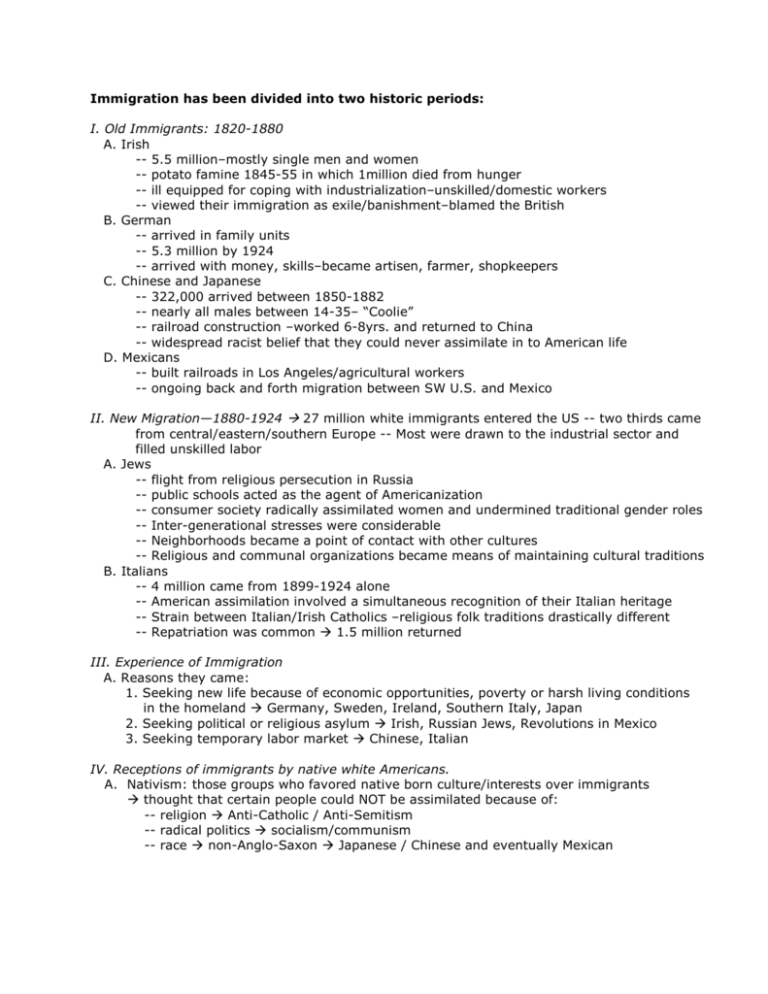
Immigration has been divided into two historic periods: I. Old Immigrants: 1820-1880 A. Irish -- 5.5 million–mostly single men and women -- potato famine 1845-55 in which 1million died from hunger -- ill equipped for coping with industrialization–unskilled/domestic workers -- viewed their immigration as exile/banishment–blamed the British B. German -- arrived in family units -- 5.3 million by 1924 -- arrived with money, skills–became artisen, farmer, shopkeepers C. Chinese and Japanese -- 322,000 arrived between 1850-1882 -- nearly all males between 14-35– “Coolie” -- railroad construction –worked 6-8yrs. and returned to China -- widespread racist belief that they could never assimilate in to American life D. Mexicans -- built railroads in Los Angeles/agricultural workers -- ongoing back and forth migration between SW U.S. and Mexico II. New Migration—1880-1924 27 million white immigrants entered the US -- two thirds came from central/eastern/southern Europe -- Most were drawn to the industrial sector and filled unskilled labor A. Jews -- flight from religious persecution in Russia -- public schools acted as the agent of Americanization -- consumer society radically assimilated women and undermined traditional gender roles -- Inter-generational stresses were considerable -- Neighborhoods became a point of contact with other cultures -- Religious and communal organizations became means of maintaining cultural traditions B. Italians -- 4 million came from 1899-1924 alone -- American assimilation involved a simultaneous recognition of their Italian heritage -- Strain between Italian/Irish Catholics –religious folk traditions drastically different -- Repatriation was common 1.5 million returned III. Experience of Immigration A. Reasons they came: 1. Seeking new life because of economic opportunities, poverty or harsh living conditions in the homeland Germany, Sweden, Ireland, Southern Italy, Japan 2. Seeking political or religious asylum Irish, Russian Jews, Revolutions in Mexico 3. Seeking temporary labor market Chinese, Italian IV. Receptions of immigrants by native white Americans. A. Nativism: those groups who favored native born culture/interests over immigrants thought that certain people could NOT be assimilated because of: -- religion Anti-Catholic / Anti-Semitism -- radical politics socialism/communism -- race non-Anglo-Saxon Japanese / Chinese and eventually Mexican B. Thus nationalities were “rated”: -- those on the low end were more "remote in culture and race" such as the Chinese -- British/Canadian peoples who barely were noticed in their arrival. -- In between were the Germans, Scandinavians with the Irish -- Jews were seen with distrust due to their connections to an "alien faith" C. Nativist Restrictive Legislation of incoming immigrants: The Legal Solutions 1. 1883 Chinese Exclusion 2. 1891 - excluded contagious diseases, mental disorders and established Ellis Island as a clearing house 3. 1903 - certain political radicals 4. 1904-1917 - 13 separate acts closed bit by bit the immigration flow. 5. 1917 - codification of 33 types of aliens to be denied entrance feebleminded / psychopathic / political radicals+ a literacy test. 6. 1921 - quota system annual immigration could not exceed 3% of the total population of that ethnic group already in the US in 1910. 7. 1924–1965 - National Origins Act banned immigration from East Asia entirely D. Anti-foreign organizations like the American Protective Association (APA) arose to go against new immigrants, and labor leaders were quick to try to stop new immigration, since immigrants were frequently used as strikebreakers.


